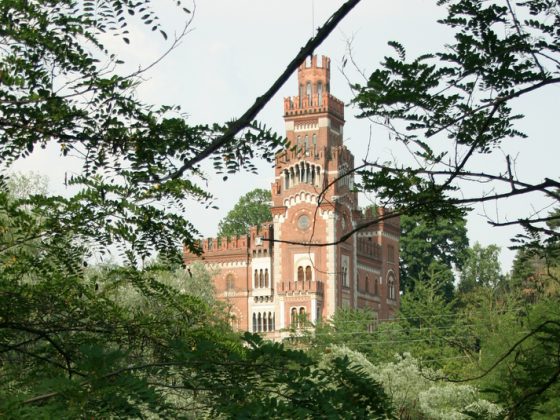The village of Crespi d’Adda, founded by the cotton industrialist Cristoforo Benigno Crespi, who had recently built a modern cotton mill in the area, is an almost unique case in Italy of a village literally invented from scratch to provide accommodation for the company’s workers, employees and managers.
This is a classic example of the paternalistic corporate ideology where philanthropy, utopia and economic interests are integrated along the lines of the English “company towns” in the project to control the workforce. Promoting a healthy and moral life and putting the needs of the community before the needs of production has the ultimate aim of distancing the workers from social demands, from the objectives of the class struggle and from union organisation. The rigid system of social hierarchies is also reflected in the organisation of space: at the geographical centre is the factory, from which two perpendicular axes branch off. The first, parallel to the river, runs alongside the factory up to the cemetery and separates the work areas from the residential, leisure and service areas; the second connects the main body of the factory with the tree-lined square in front of the pinewood.
The residential buildings are distributed in a regular grid with a succession of increasing prestige as one moves away from the factory. At first, starting in 1878, a few large multi-family houses were built for the workers; then, between 1889 and 1984, it was the turn of the one- and two-family villas, built on the model of English cottages. In 1894, construction began on Villa dei Crespi, designed in the form of a castle, with towers and battlements, by the architect Pirovano; the year before, construction of the church had been completed, designed by the architect Cavenaghi. Until 1925, other works completed the structure of the village, such as the cemetery, new cottages for the employees, the kindergarten for the workers’ children, the clinic and the washhouse. The town that was thus formed, and that we can still see today substantially intact, responded to a precise design that identified, by placing them in a privileged position facing each other, the symbols of power: the villa-castle and the church.
